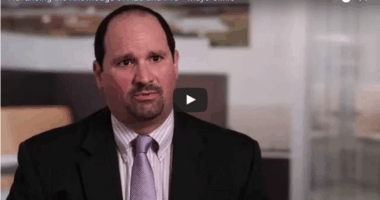Improving ALS, FTD research is aim of digital tool grant program
Digital Assessment Tools for FTD and ALS Awards offering $750K to develop new tech

The ALS Association and the Association for Frontotemporal Degeneration (AFTD) have opened a global grant program to accelerate the development of digital assessment tools for amyotrophic lateral sclerosis (ALS) and frontotemporal dementia (FTD), a related condition.
The Digital Assessment Tools for FTD and ALS Awards, backed by a $500,000 ALS Association Partnership Grant, will provide researchers with $750,000 to help develop assessment tools for the neurodegenerative disorders. From two to four grants will be funded over two years.
The tools must utilize wearable trackers, smartphones, or other devices to remotely collect data on a patient’s symptoms or ability to function. Such assessment tools could remove some of the barriers that prevent ALS and FTD patients from participating in research, which could improve care for both diseases.
“Carefully developed digital tools can help people living with a diagnosis of ALS, FTD, or ALS-FTD to participate in research more easily and more frequently, and from the comfort of their own homes,” Penny Dacks, PhD, AFTD’s senior director of scientific initiatives, said in a press release. “Because digital tools allow for remote participation from those who may not have the means to travel to sites due to cost or distance, the data is more likely to represent the people living with these diseases.”
The awards are open to scientists at academic or nonprofit research institutions, as well as for-profit organizations such as digital technology developers and biotechnology companies, although other types of organizations may qualify. Academia and industry partnerships are encouraged to apply. Applications must include proof of research expertise in both ALS and FTD.
Depending on a project’s scope and development stage, budget requests can be between $150,000 and $400,000. Grant applications at nonprofit or academic institutions may request up to 10% of their budget to cover indirect costs. The application deadline is July 14. The funding period will start Jan. 1, 2024, and end Dec. 31, 2026.
The case for shared ALS, FTD research
ALS is marked by the loss of motor neurons — the nerve cells that control voluntary movement — leading muscles to shrink and weaken. FTD is a group of neurological disorders that impact the brain’s frontal and temporal lobes, areas typically associated with behavior, personality, and language.
Both diseases share common underlying processes that promote disease development, namely the abnormal accumulation of the protein TDP-43. In healthy cells, this protein enters the nucleus and binds DNA and RNA to mediate protein production. In ALS and FTD, though, the protein is abnormally shaped and tends to accumulate in the cytoplasm, where it forms protein clumps that are toxic to cells.
ALS and FTD symptoms can overlap. For example, ALS patients can have language and behavioral issues that are common in FTD, while people with FTD can have movement problems such as those exhibited in ALS.
“Despite being intertwined biologically, research into ALS and FTD has traditionally been conducted in silos. This partnership and collaborative funding will help bridge the divide, bringing together researchers with interests spanning the continuum of these two diseases,” said Kuldip Dave, PhD, senior vice president for research at the ALS Association. “Together, we can achieve much more than we could on our own.”
Research into both diseases is hamstrung by the severely limited pool of prospective participants with the time and means to travel to a study site. Also, clinical centers that provide ALS care and conduct disease research are typically separate from those for FTD patients. Digital assessment tools could surmount such barriers.
Dacks said it’s time to focus on the disorders’ commonalities to help both patient communities.
“AFTD is proud to partner with The ALS Association to foster collaboration across the FTD and ALS research communities. This program will advance digital tool development at the intersection of these two worlds, helping to create tools that can meet the families that are often living in the middle,” she said.







